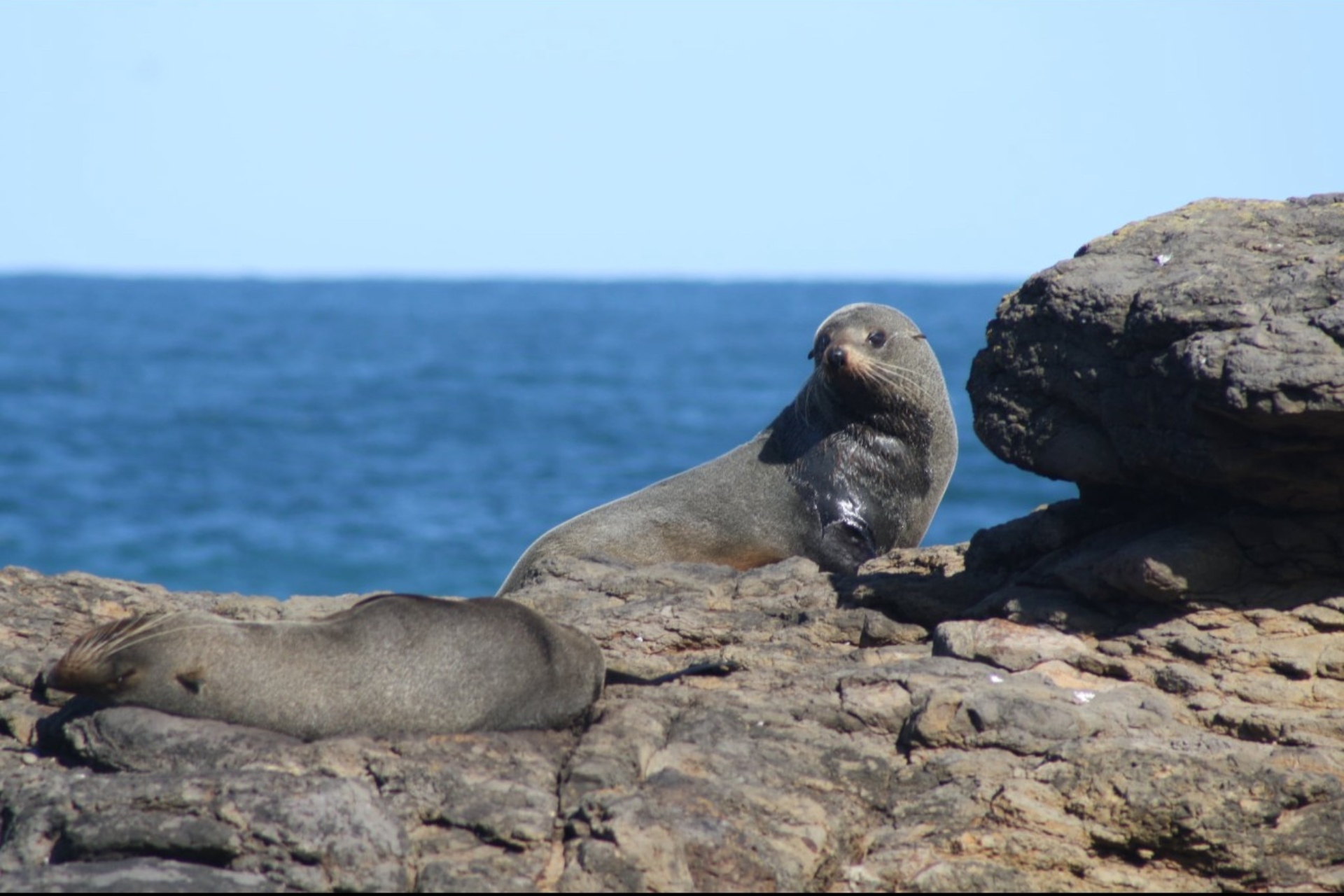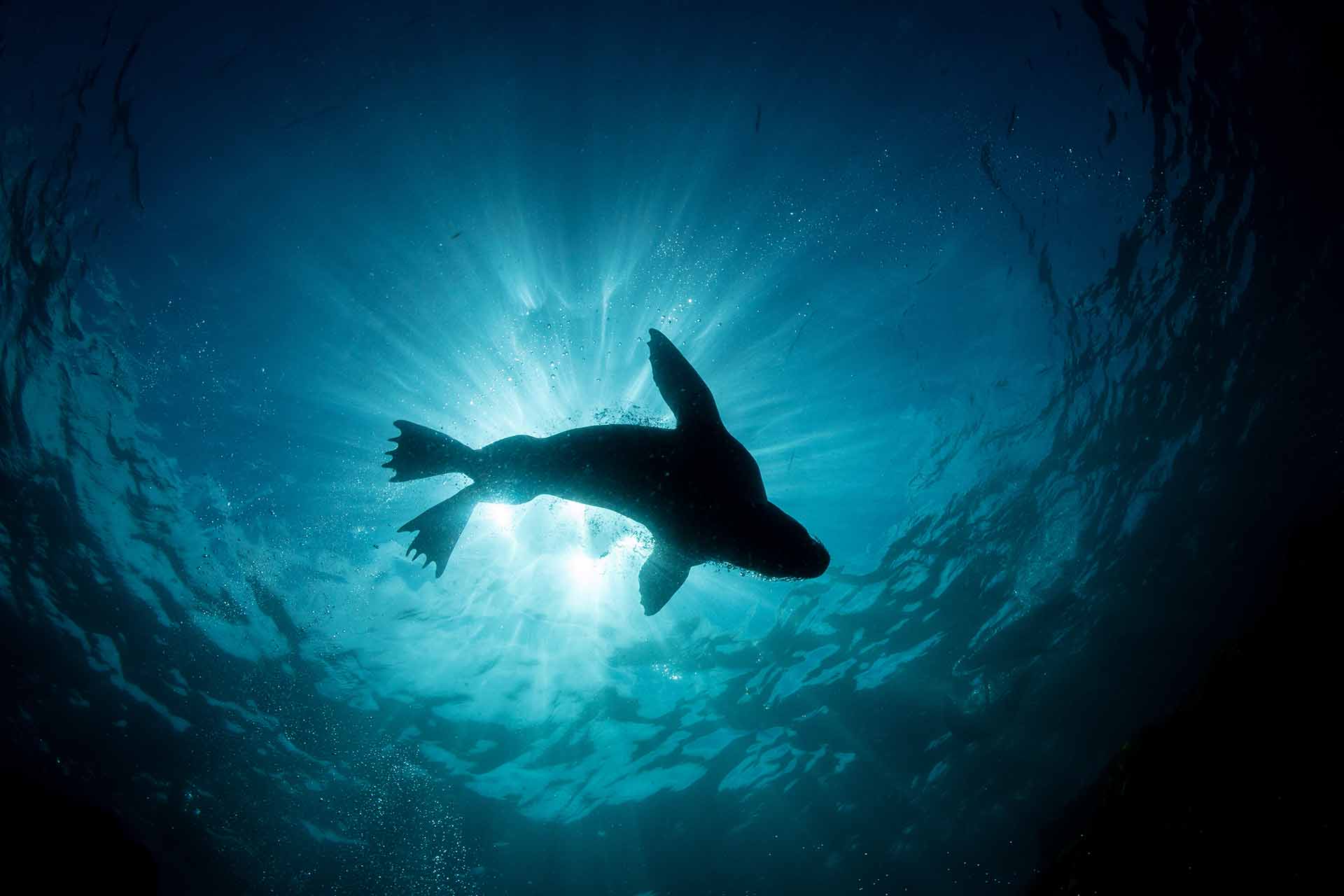In December 2024 and January 2025, the department and its Seabirds to Seascapes partners ran an educational campaign to raise awareness about this vital marine conservation project.
As part of the campaign, a public competition was launched to involve the community in renaming the seal survey initiative. The Great Seal Reveal was selected after receiving more than 150 creative entries. The strong response to the competition highlights the community's interest in protecting our marine wildlife. The new name also closely aligns with our other important initiative, The Great Big Little Penguin Count.
What is The Great Seal Reveal?
The Great Seal Reveal aims to identify key hotspot locations for large clusters of Australian and New Zealand fur seals across NSW waters, as well as population densities and features associated with preferred breeding habitats. This significant research is undertaken by:
- identifying key seal hotspots and using drones to better understand the seal population along the New South Wales coast
- asking citizen scientists to contribute by using our Haul-out, Call-out seal-spotting platform
- tracking seals that have been rehabilitated and released along the New South Wales coastline to monitor their preferred habitats
- collecting seal scats (poo) from accessible hot spots and analysing them to learn more about their health.
Why it matters
Seals are vital to healthy marine ecosystems, but they face growing pressures from human activity. The Great Seal Reveal will help inform critical marine conservation initiatives in New South Wales by learning more about where seals gather and how they live. This information is crucial for effectively managing fur seal populations, including mitigating risks of human and seal interactions.
2025 launch
The 2025 Great Seal Reveal launched this August at Martin Islet, a small island lying off Red Point in Port Kembla, New South Wales.
This year, we’re continuing our effort to monitor and better understand seal populations along the NSW coastline, using drone surveys and community sightings to track Australian (Arctocephalus pusillus doriferus) and New Zealand (Arctocephalus forsteri) fur seals.
These surveys are part of the wider Seabirds to Seascapes program and will run at key locations over the coming months.
Survey sites
The first round of surveys for 2025 includes the following sites:
- Martin Islet
- Drum and Drumsticks
- Brush Island
- Steamers Head
- Big Seal Rock
- Cabbage Tree Island
- Barrenjoey Headland
- Barunguba (Montague) Island.
These sites are strategically chosen as they are known breeding and haul-out sites (areas where seals temporarily leave the water to rest or breed) for fur seals. The data collected informs critical marine conservation initiatives and helps us fill knowledge gaps essential for managing human–seal interactions responsibly.
Stay tuned for announcements in early 2026 about the results of the 2025 Great Seal Reveal.
Citizen science initiative: Haul-out, Call-out
Our Haul-out, Call-out citizen science platform invites the community to support seal conservation efforts by reporting sightings along the NSW coastline. These public contributions help identify important haul-out sites, which are essential to understanding seal behaviour and protecting their preferred habitats.
If you come across injured or sick marine wildlife, please call 13000 PARKS (1300 072 757) or the ORRCA rescue hotline on 02 9415 3333.

